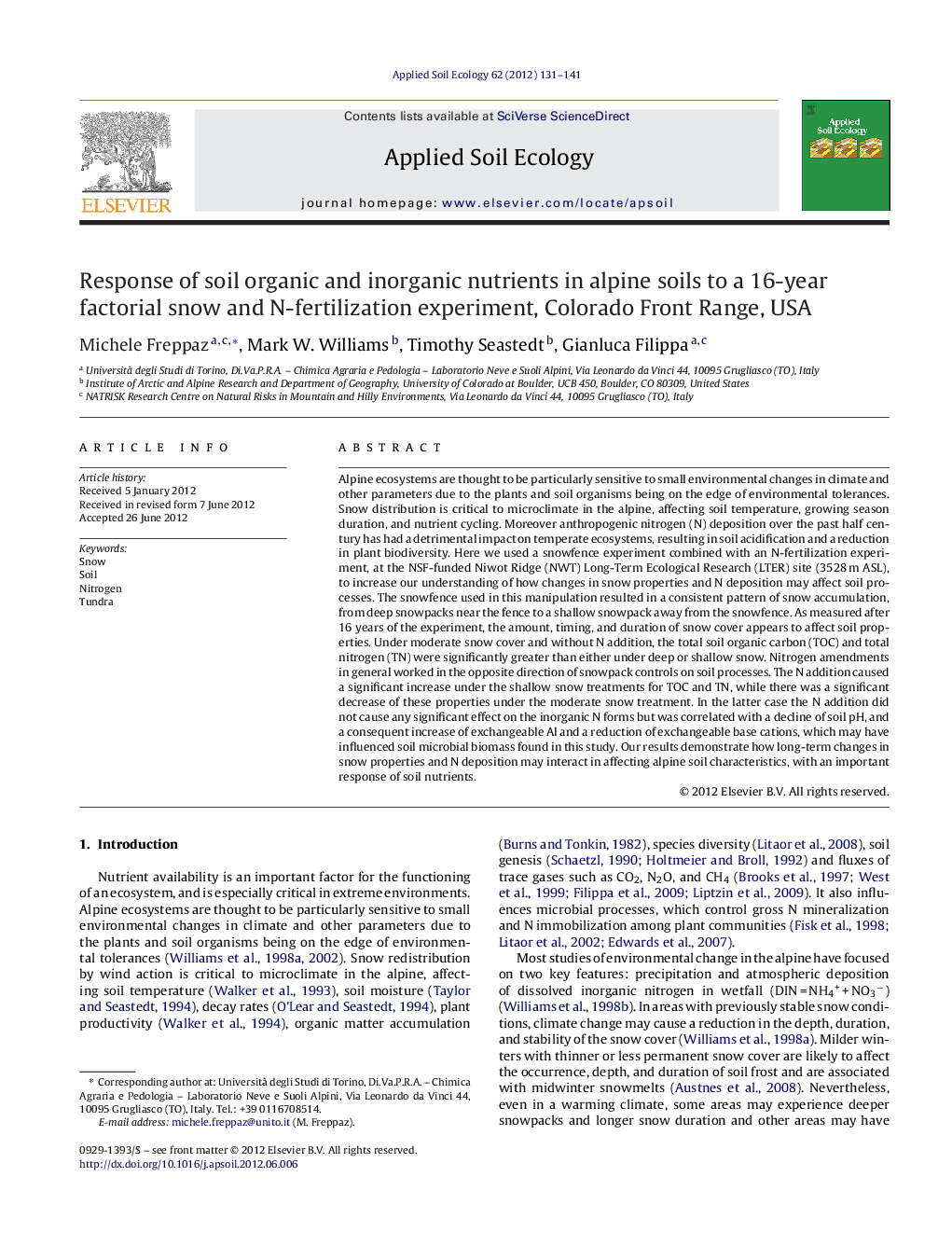| Article ID | Journal | Published Year | Pages | File Type |
|---|---|---|---|---|
| 4382503 | Applied Soil Ecology | 2012 | 11 Pages |
Alpine ecosystems are thought to be particularly sensitive to small environmental changes in climate and other parameters due to the plants and soil organisms being on the edge of environmental tolerances. Snow distribution is critical to microclimate in the alpine, affecting soil temperature, growing season duration, and nutrient cycling. Moreover anthropogenic nitrogen (N) deposition over the past half century has had a detrimental impact on temperate ecosystems, resulting in soil acidification and a reduction in plant biodiversity. Here we used a snowfence experiment combined with an N-fertilization experiment, at the NSF-funded Niwot Ridge (NWT) Long-Term Ecological Research (LTER) site (3528 m ASL), to increase our understanding of how changes in snow properties and N deposition may affect soil processes. The snowfence used in this manipulation resulted in a consistent pattern of snow accumulation, from deep snowpacks near the fence to a shallow snowpack away from the snowfence. As measured after 16 years of the experiment, the amount, timing, and duration of snow cover appears to affect soil properties. Under moderate snow cover and without N addition, the total soil organic carbon (TOC) and total nitrogen (TN) were significantly greater than either under deep or shallow snow. Nitrogen amendments in general worked in the opposite direction of snowpack controls on soil processes. The N addition caused a significant increase under the shallow snow treatments for TOC and TN, while there was a significant decrease of these properties under the moderate snow treatment. In the latter case the N addition did not cause any significant effect on the inorganic N forms but was correlated with a decline of soil pH, and a consequent increase of exchangeable Al and a reduction of exchangeable base cations, which may have influenced soil microbial biomass found in this study. Our results demonstrate how long-term changes in snow properties and N deposition may interact in affecting alpine soil characteristics, with an important response of soil nutrients.
► Snow distribution is critical to microclimate in the alpine. ► Anthropogenic N deposition has had a detrimental impact on temperate ecosystems. ► Here we used a snowfence experiment combined with an N-fertilization experiment. ► Long-term changes in snow properties and N deposition interact, with contrasting effects. ► They affect alpine soil characteristics, with an important response of soil nutrients.
